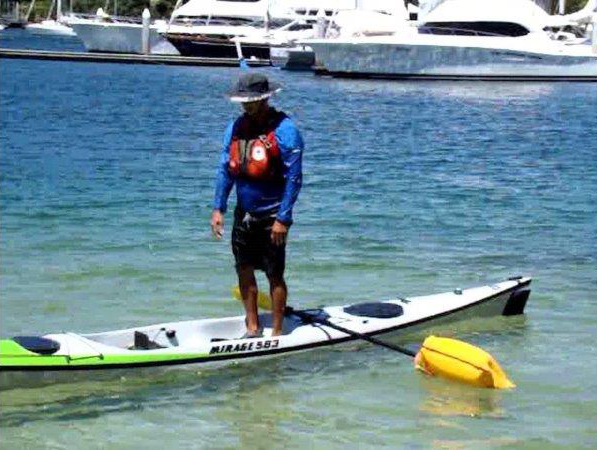Know How
How to Do the Paddle Float Rescue
How to Do the Paddle Float Rescue
There are 16 steps
- Wet exit the boat and then stuff one leg back into the cockpit to keep in nearby and free up your hands.
- Put the paddle float onto the end of your paddle, inflate the bag, and secure the paddle float to the paddle.
- Flip the kayak right-side-up. If you go to the bow, push, and scissor kick just before you flip it, you can drain much of the water out of the cockpit. Don’t let go of the boat as you make your way to the bow.
- Go back to the cockpit and position yourself behind the cockpit with the paddle between you and the cockpit.
- With the hand that’s nearest the cockpit, grab the paddle shaft and the cockpit coaming. Reach across the rear deck with your other hand and grab the perimeter deck line.
- Let your legs float to the surface and then lunge up onto the rear deck. If you need extra support, hook the angle closest to the paddle shaft over the shaft to gain leverage.
- After you’re on the rear deck, hook the ankle of the foot furthest from the shaft over the shaft.
- Slide your leg nearest the cockpit into the cockpit.
- Take the hand that holds the perimeter deck line a slide it under the leg that’s still on the shaft to grab the shaft.
- Swing your other leg into the cockpit.
- Stay low and slide into the cockpit until your butt is even with the seat.
- Spin around in the direction of the paddle shaft until you’re sitting forward in the cockpit.
- Stuff the paddle shaft between your lifevest and the cockpit coaming and lean slightly forward to trap it there. Use the float for stability.
- Get your spray skirt on.
- Make a gap in the skirt big enough to put your pump into and pump out any water in the cockpit.
- On calm water, deflate the bag by opening the valves and pushing the float into the water with your paddle. The pressure from the water will squeeze all the air out. On rougher water, unclip the bag from your paddle, while still using it for support, partially or fully deflate it, and put the bag under your bungee cords or paddle to shore with the bag still on one blade and use it for stability when needed.
For the reasons that I mentioned above, I think it’s a worthwhile skill to learn, to teach, and to practice. I hope you agree, and whether or not you do, I’d like to hear your thoughts.
Note: Learning and teaching the paddle float doesn’t mean that as a kayaker progresses that he won’t or shouldn’t learn the roll. The paddle float isn’t an all-and-nothing-else technique.

